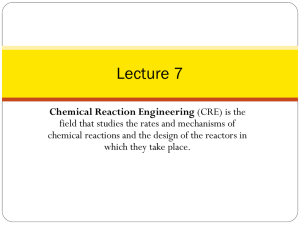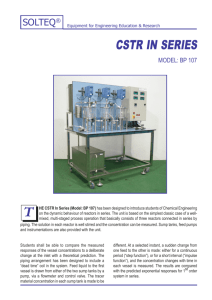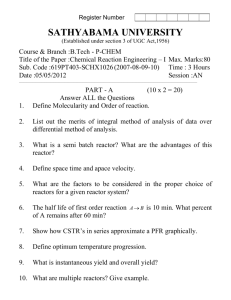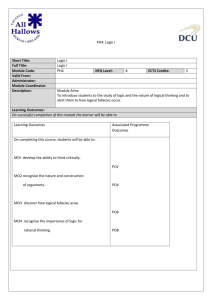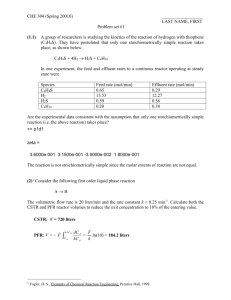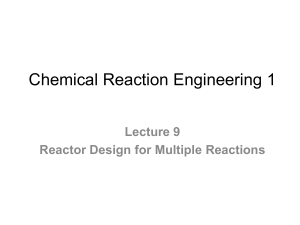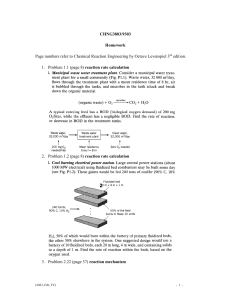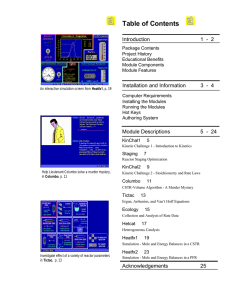sathyabama university
advertisement
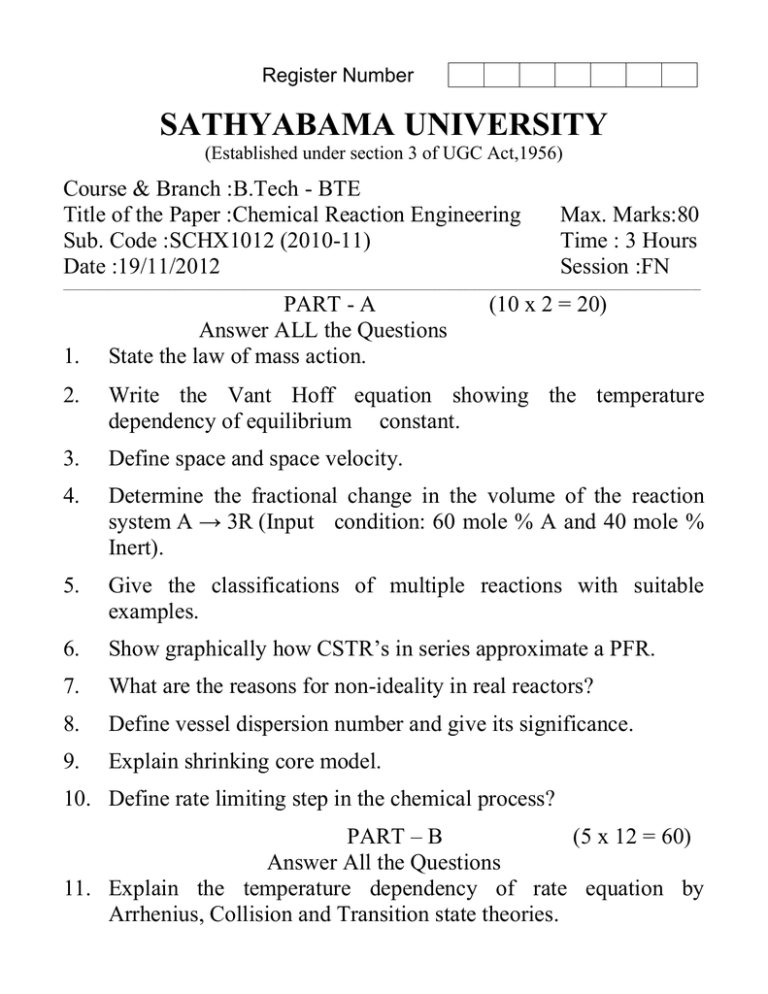
Register Number SATHYABAMA UNIVERSITY (Established under section 3 of UGC Act,1956) Course & Branch :B.Tech - BTE Title of the Paper :Chemical Reaction Engineering Sub. Code :SCHX1012 (2010-11) Date :19/11/2012 Max. Marks:80 Time : 3 Hours Session :FN _______________________________________________________________________________________________________________________________ 1. PART - A Answer ALL the Questions State the law of mass action. (10 x 2 = 20) 2. Write the Vant Hoff equation showing the temperature dependency of equilibrium constant. 3. Define space and space velocity. 4. Determine the fractional change in the volume of the reaction system A → 3R (Input condition: 60 mole % A and 40 mole % Inert). 5. Give the classifications of multiple reactions with suitable examples. 6. Show graphically how CSTR’s in series approximate a PFR. 7. What are the reasons for non-ideality in real reactors? 8. Define vessel dispersion number and give its significance. 9. Explain shrinking core model. 10. Define rate limiting step in the chemical process? PART – B (5 x 12 = 60) Answer All the Questions 11. Explain the temperature dependency of rate equation by Arrhenius, Collision and Transition state theories. (or) 12. (a) The pyrolysis of ethane proceeds with an activation energy of about 75000 cal/mol. How much faster is the decomposition at 650 oC than at 500 oC. (b) At 500 K the rate of a bimolecular reaction is ten times the rate at 400 K. Find the activation energy for this reaction (i) From Arrhenius law (ii) From Collision theory (iii) What is the % difference in rate of reaction at 600 K predicted by these two methods? 13. Derive the performance equations for Batch reactor, PFR and CSTR (or) 14. The decomposition of NH3 on tungsten wire at 856 oC yielded the following results Time, sec 200 400 600 1000 Total pressure, (torr) 228 250 273 318 Find the order of the reaction and the rate constant. 15. A homogeneous liquid phase reaction with the stoichiometry and the kinetics A → S, -rA = kCA2 takes place with 50% conversion in a MFR. (i). Find the conversion if this reactor is replaced by another MFR having volume 6 times that of the original reactor – all else remains unchanged. (ii). Find the conversion if the original reactor is replaced by a PFR of the same size – all else remains unchanged. (or) 16. The elementary liquid phase reaction A+B → R+S is carried out in a PFR. For equimolar amounts of A and B (CAo= CBo = 0.9 mol/l), 94% conversion is achieved in it. If a CSTR, 10 times as large as the PFR, were arranged in series with the existing unit, which unit needs to be arranged first (in series) to enhance the production rate? 17. (a) Derive the equation to find out the conversion using dispersion model. (b) Explain the method of conducting stimulus response experiments. (or) 18. The concentration readings in table represent a continuous response to a pulse input into a closed vessel which is to be used as a chemical reactor. This reactor is used for a liquid decomposing with rate -rA = k CA, k = 0.1 min-1 (8+4) Time, min 0 1 2 3 4 5 6 7 8 9 10 12 14 Tracer conc., g/m3 0 1 5 8 10 8 6 4 3 2.2 1.5 0.6 0 Calculate (a) the conversion using (i) Real reactor (ii) Ideal PFR, (iii) Ideal MFR and (iv) The tanks in series model. (b) Assume dispersed plug flow in a closed vessel, find out vessel dispersion number. 19. Explain the determination of surface area and pore volume of the catalyst (or) 20. Derive the rate equation for non-catalytic chemical reaction when diffusion through ash layer is controlling the rate of reaction.

